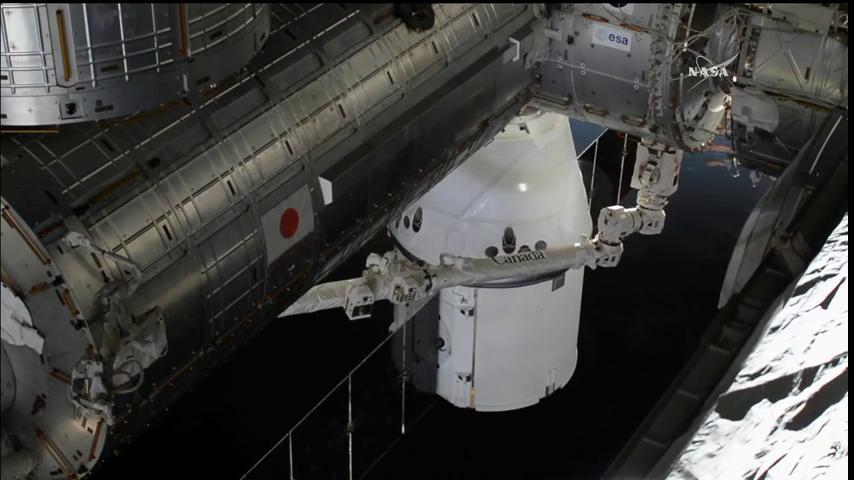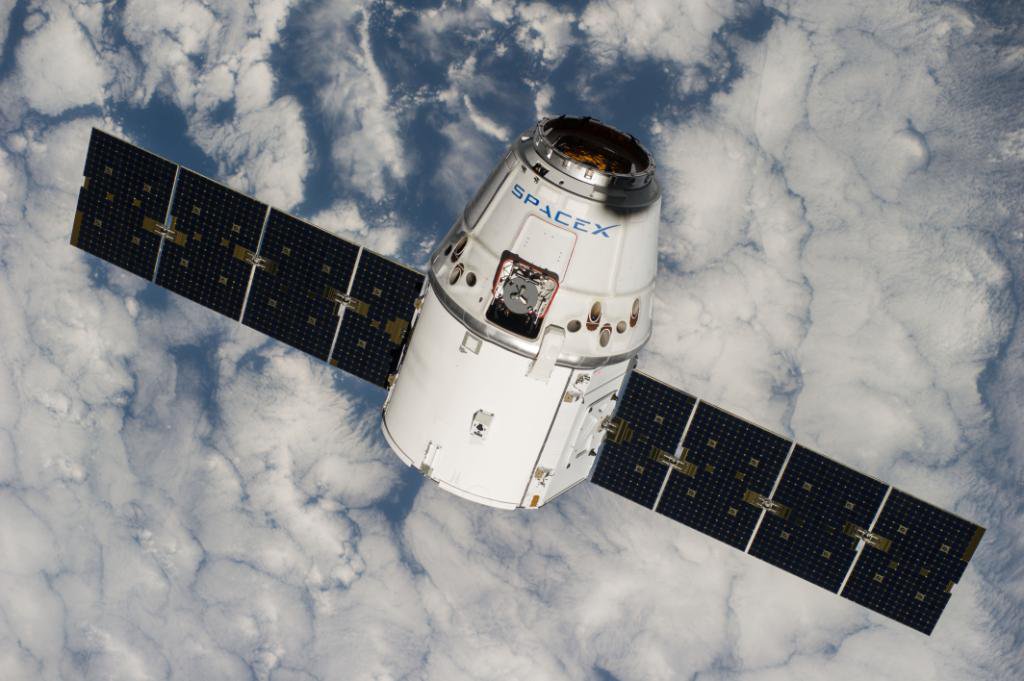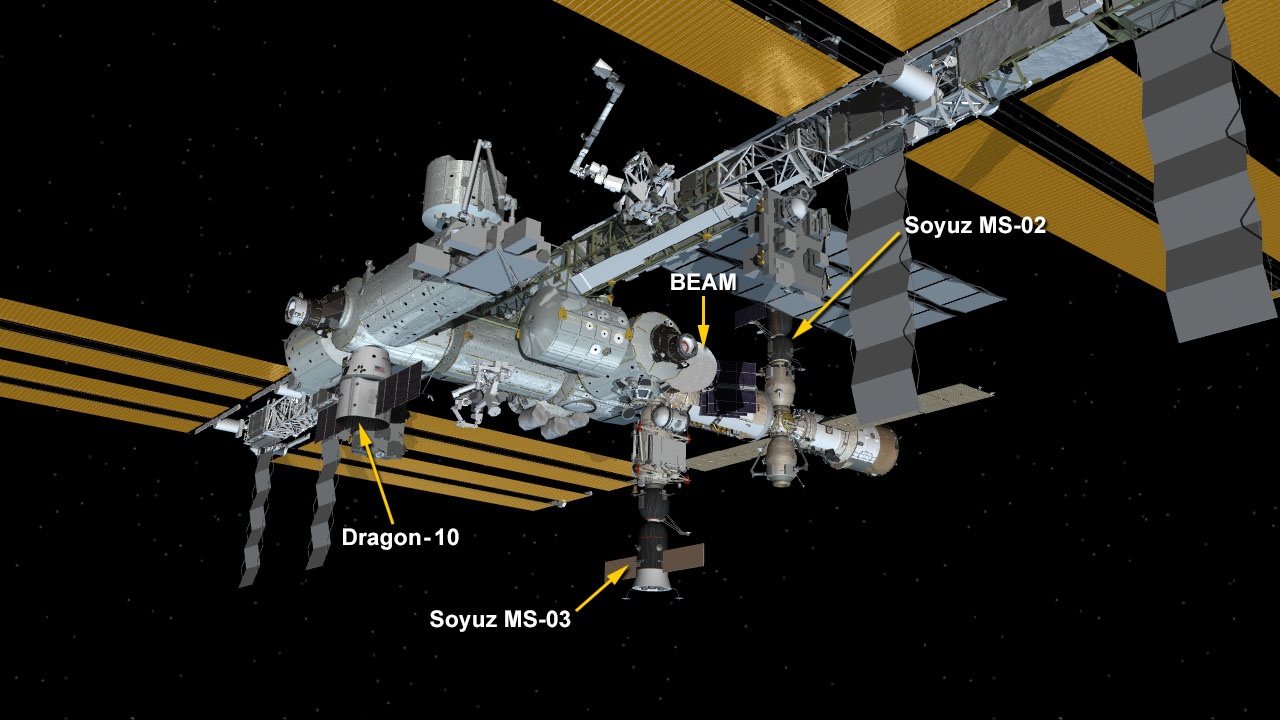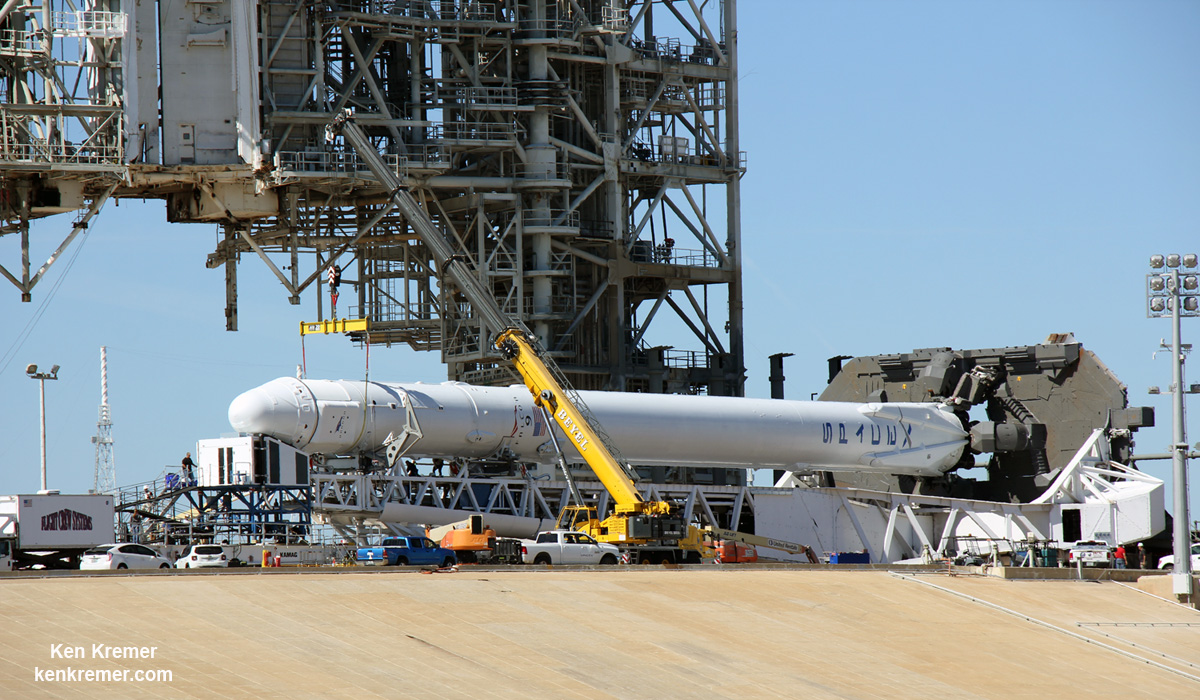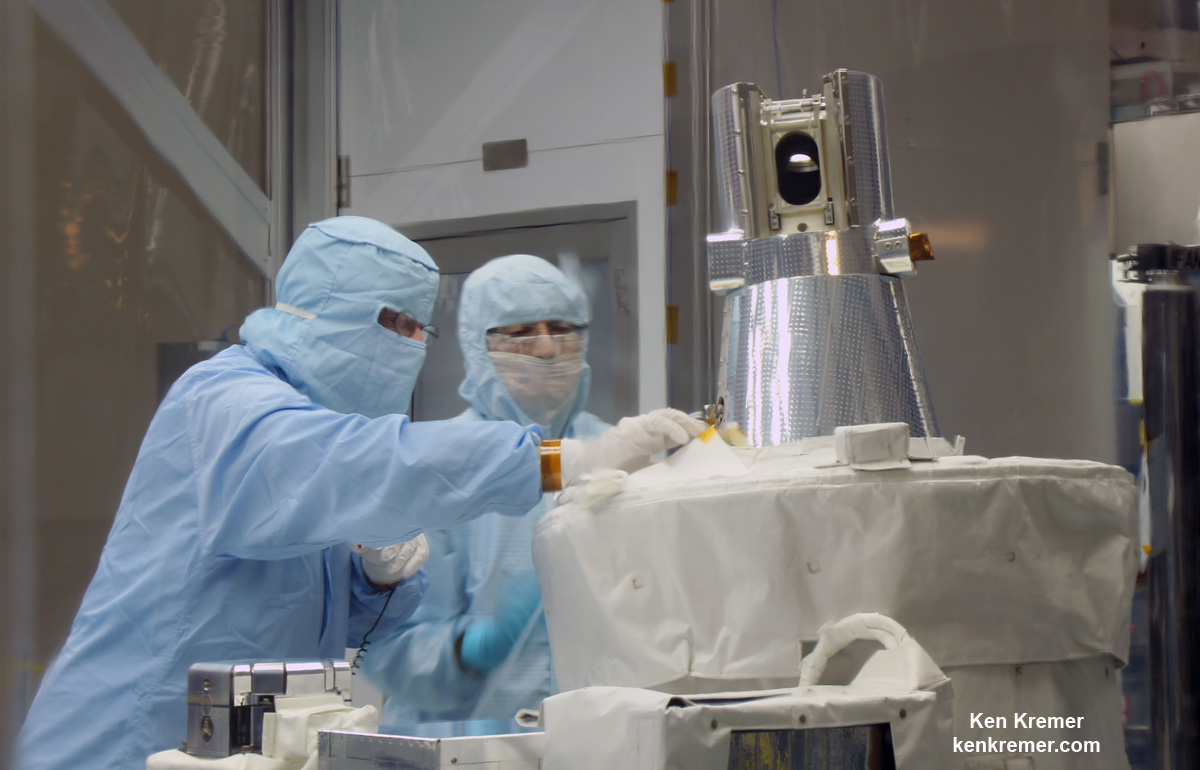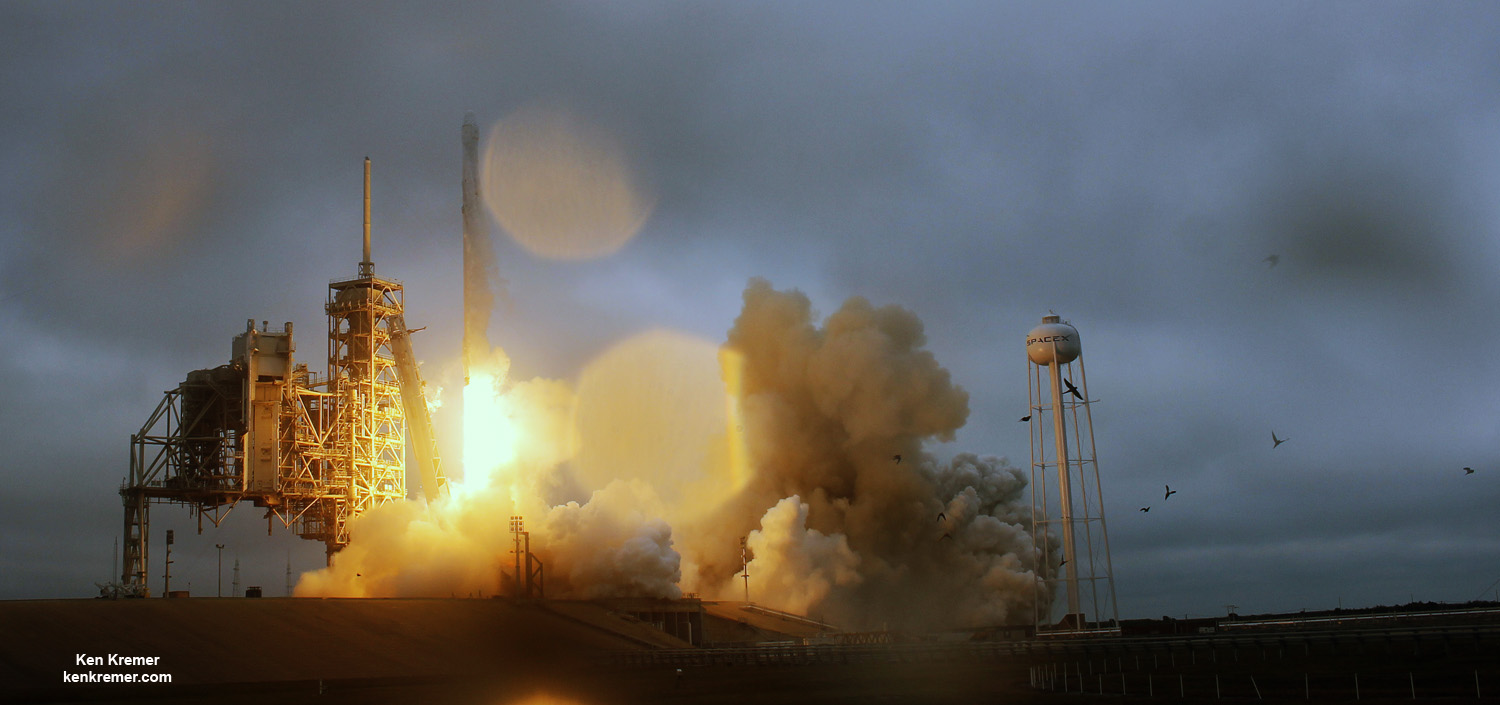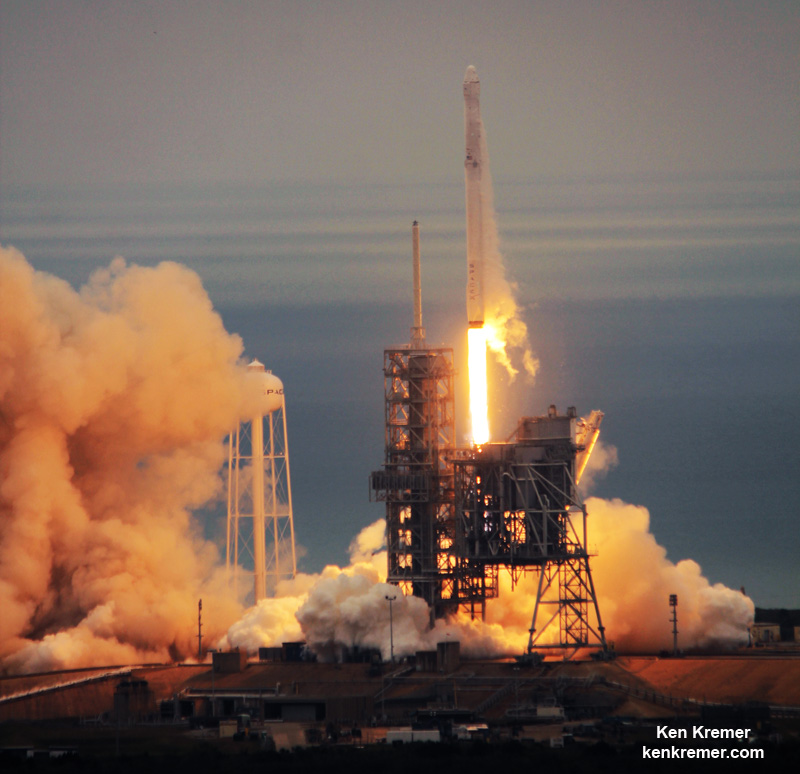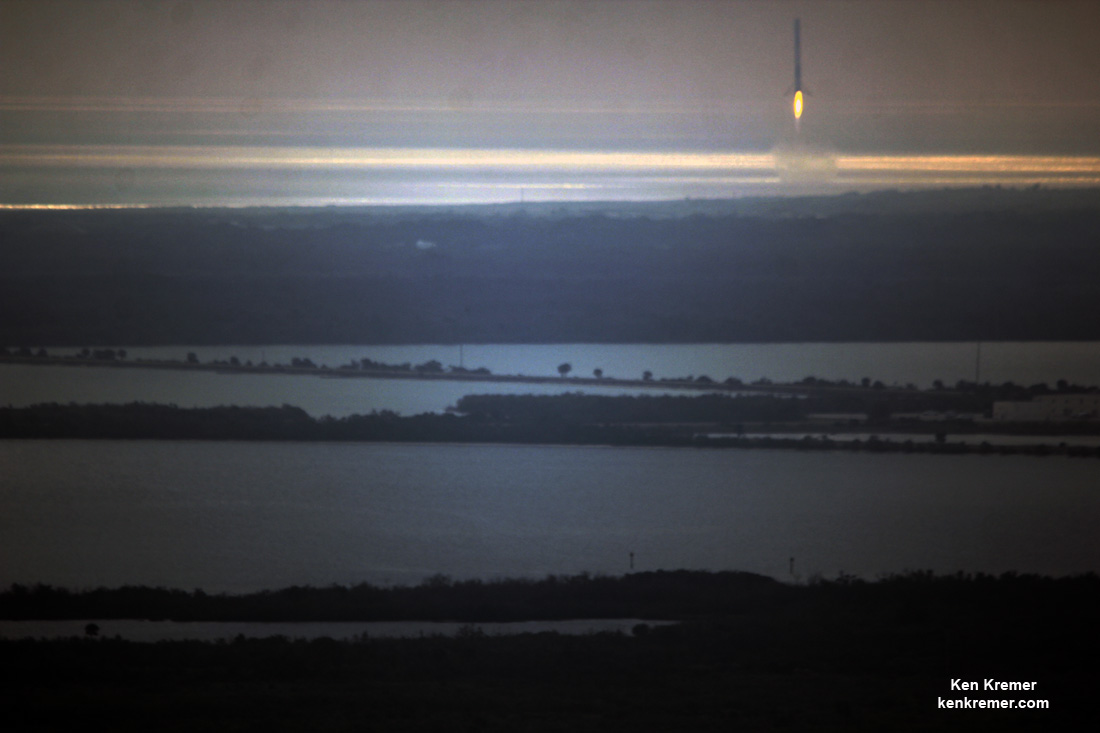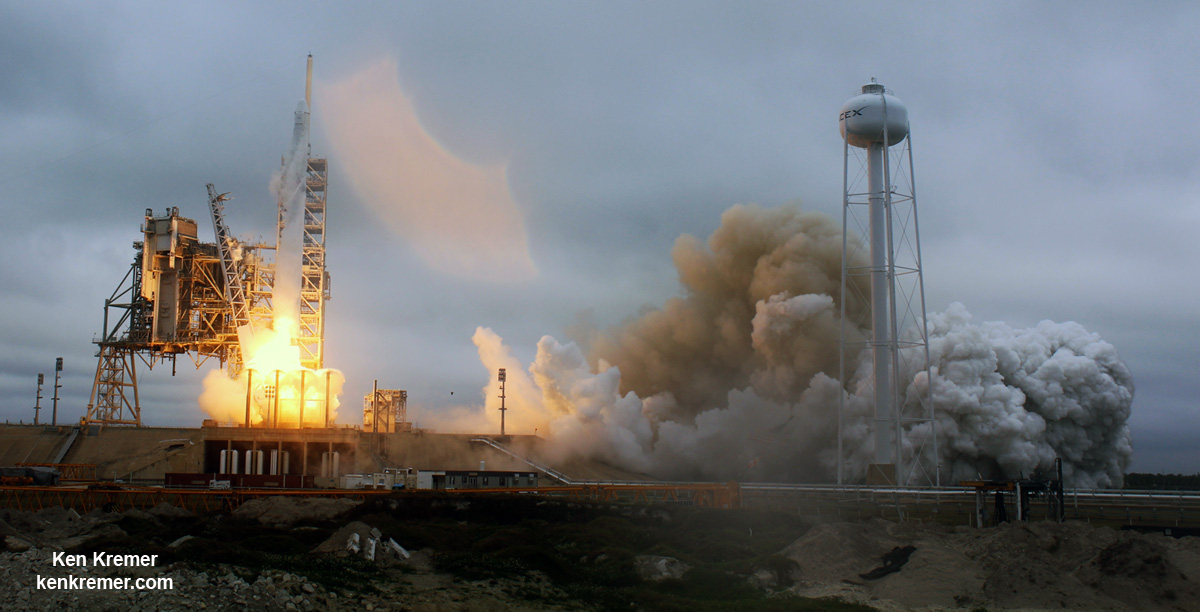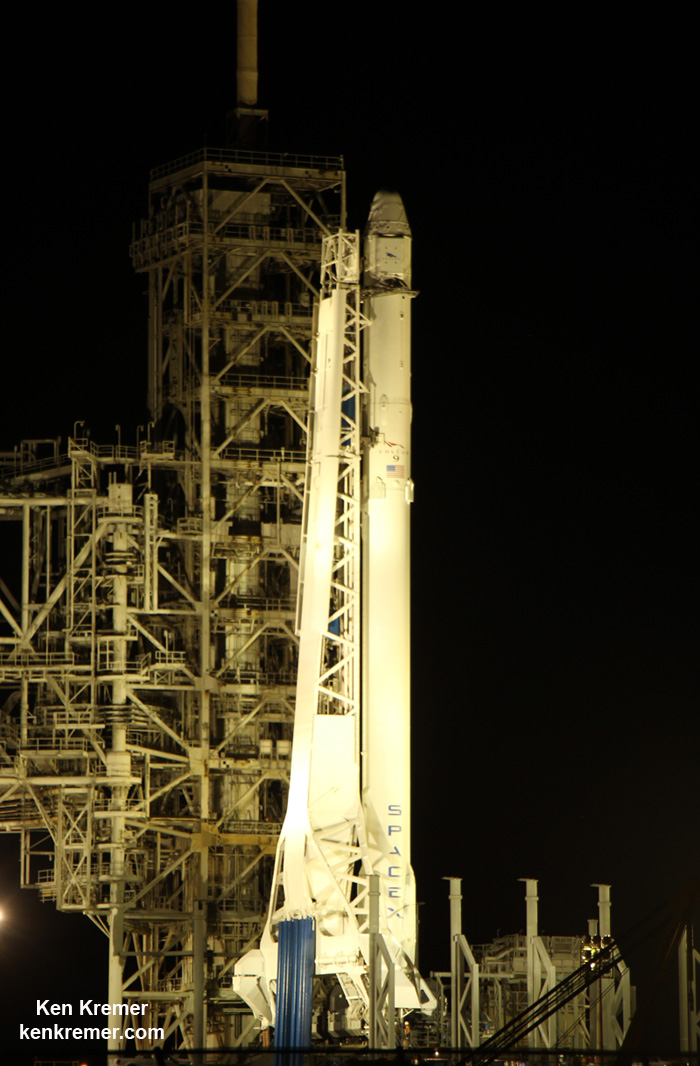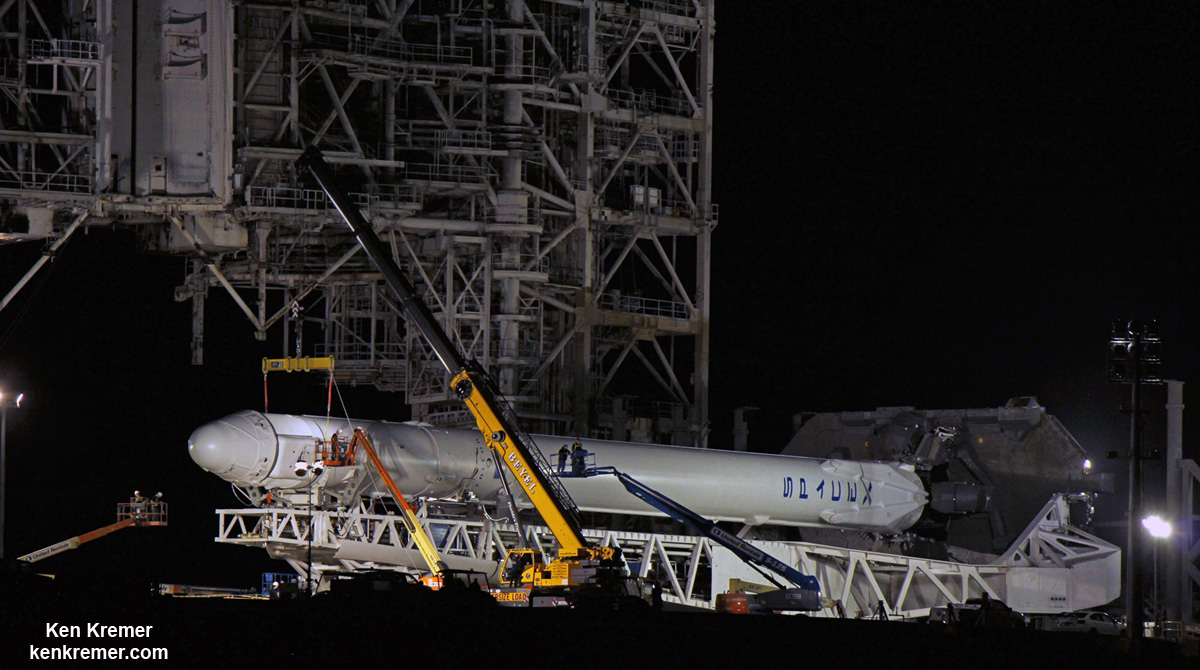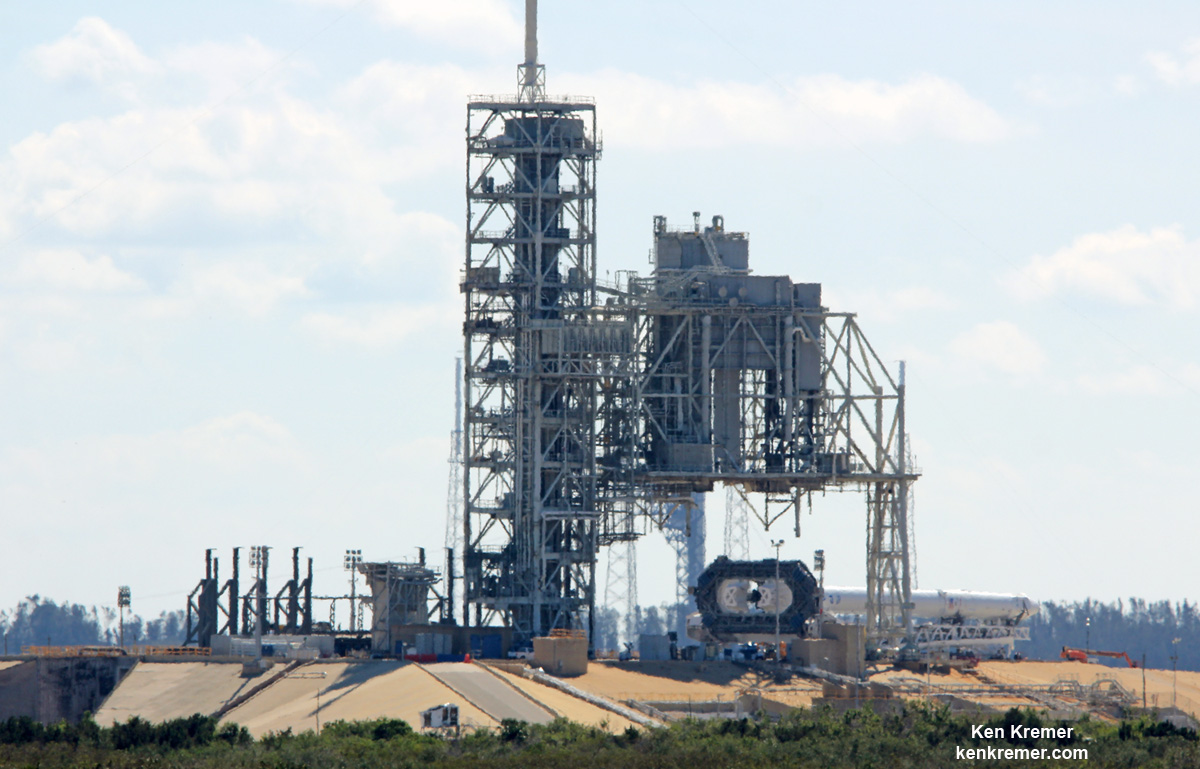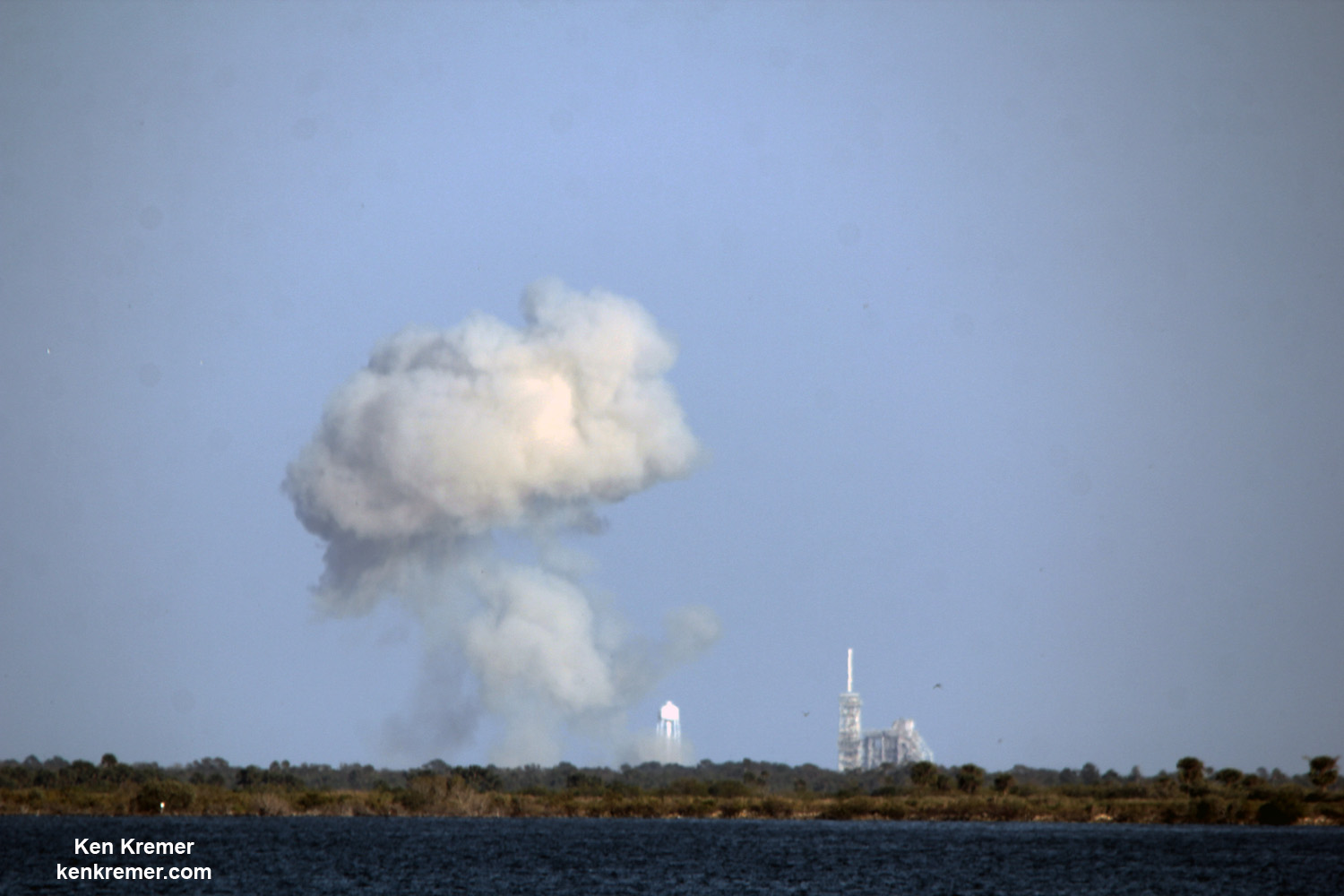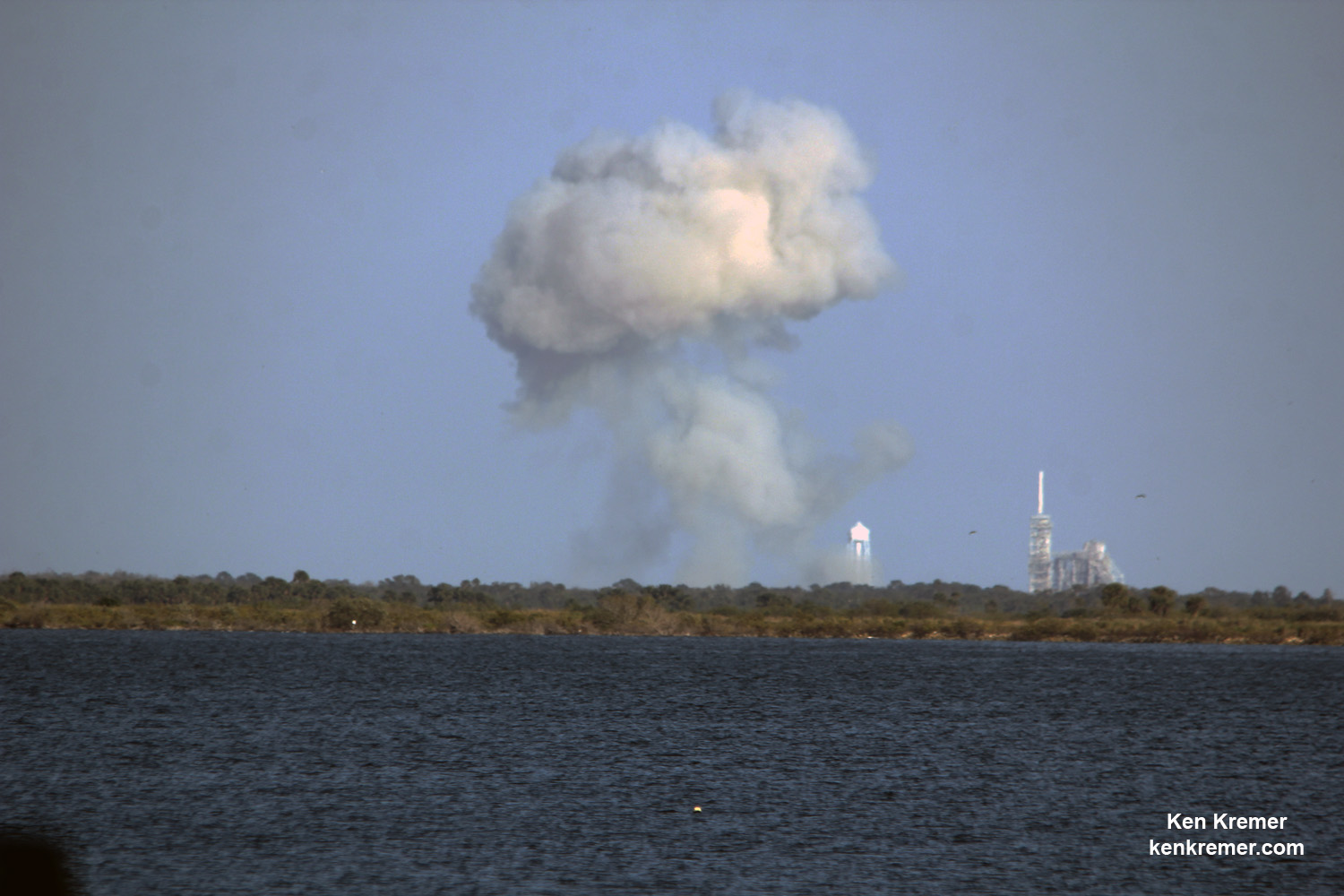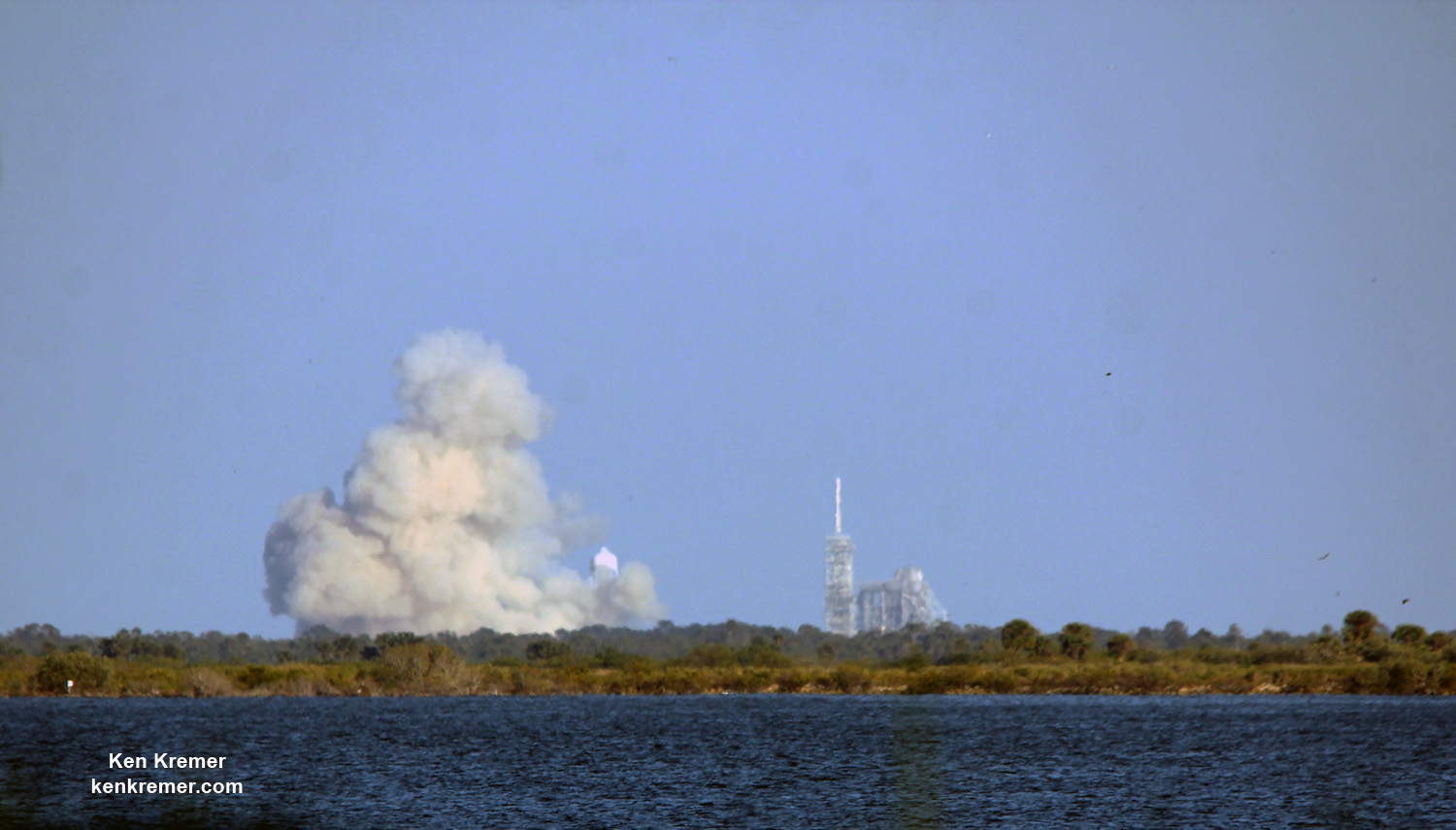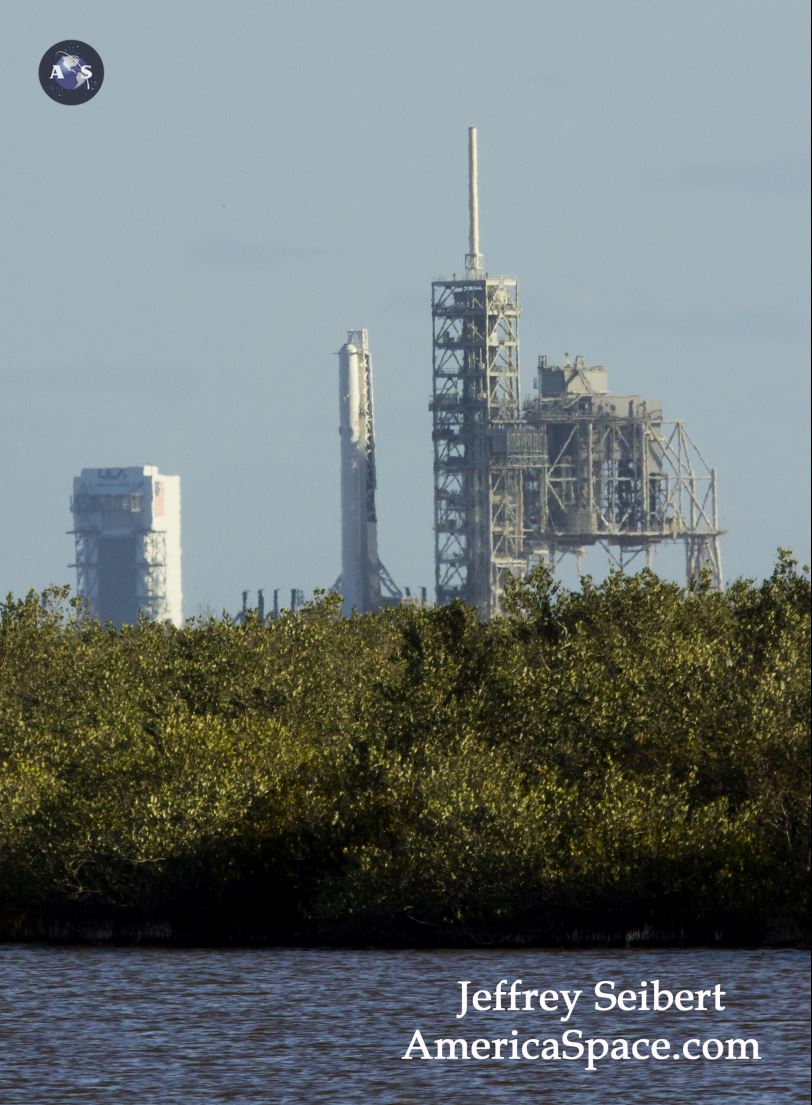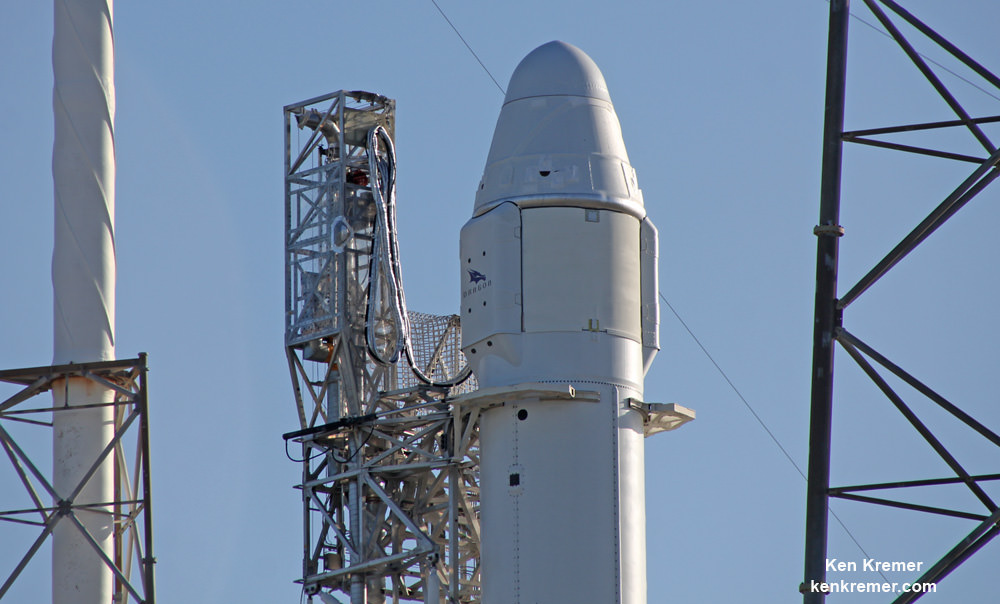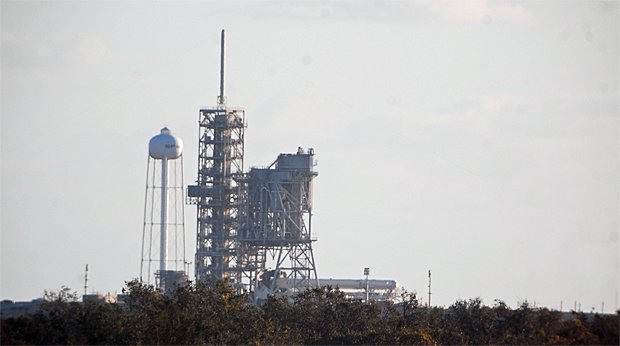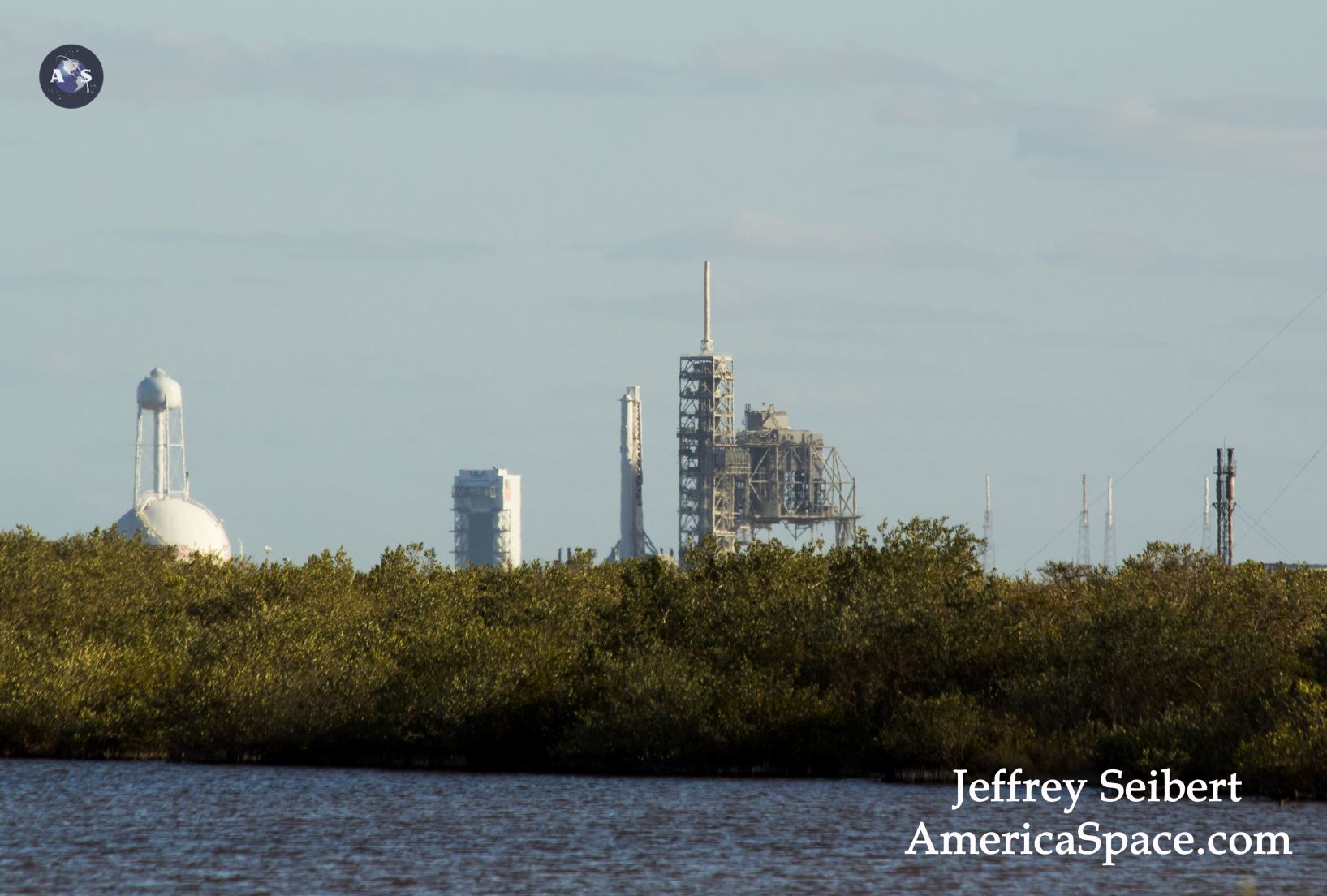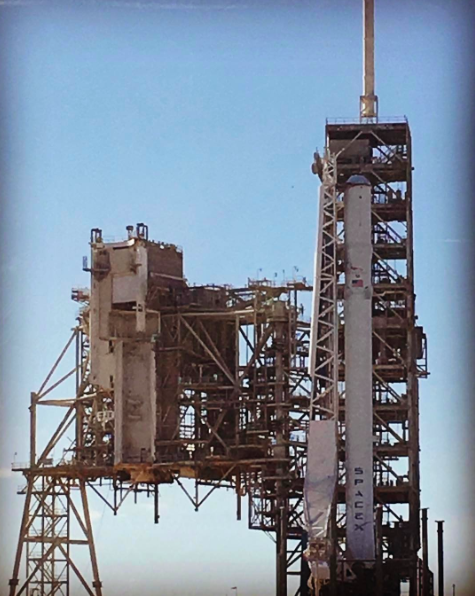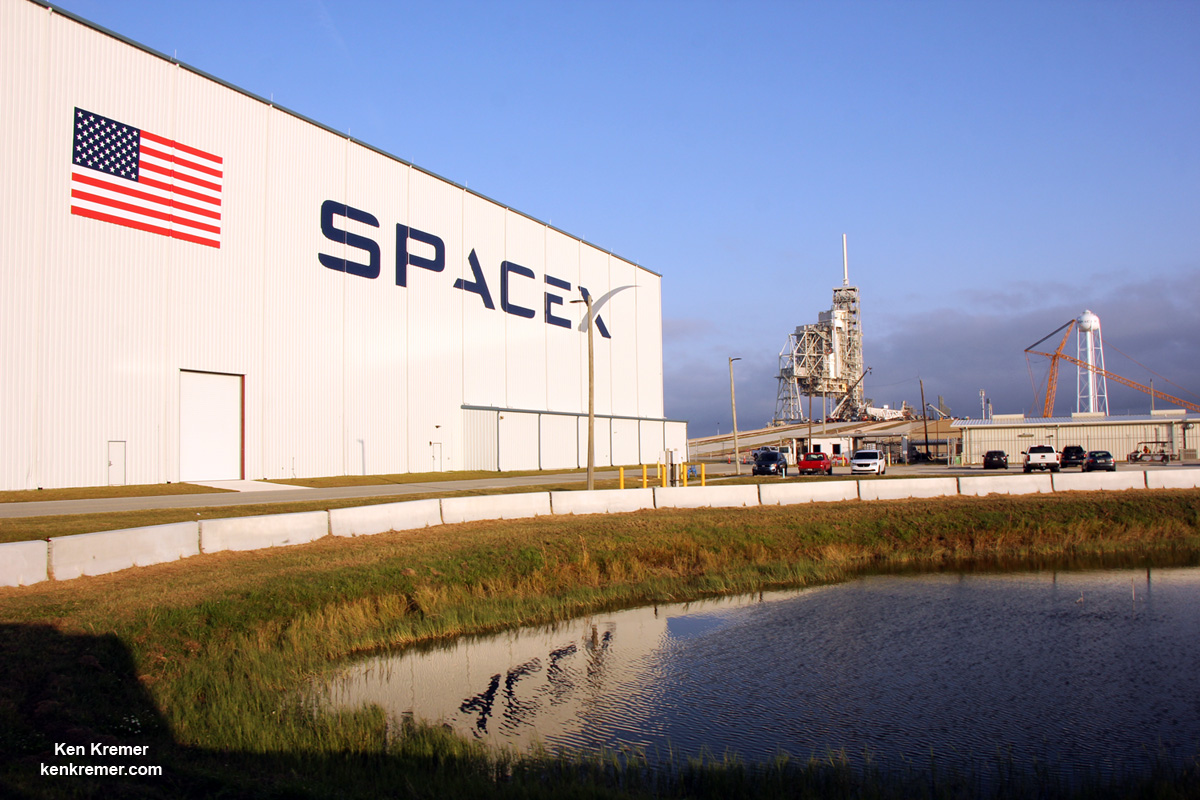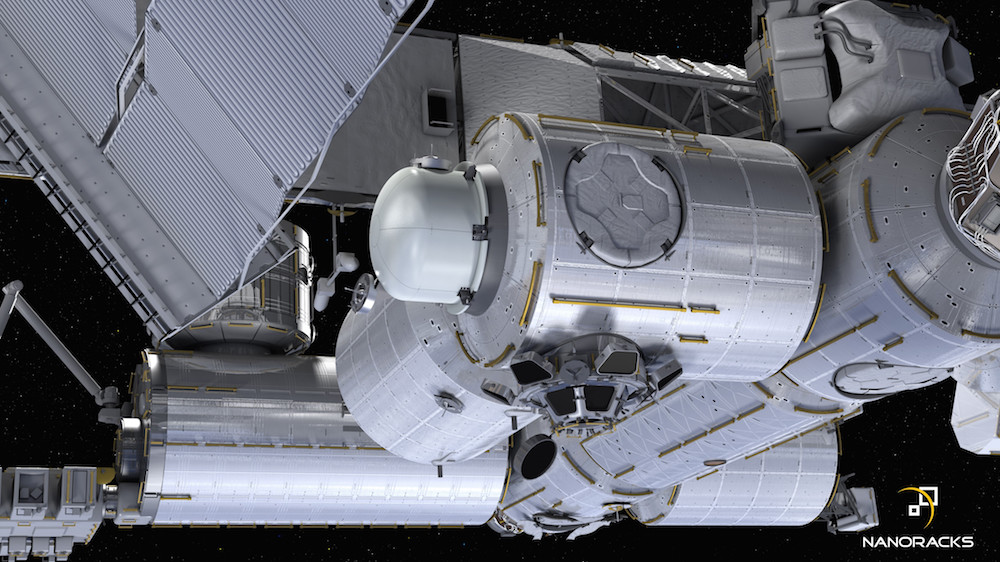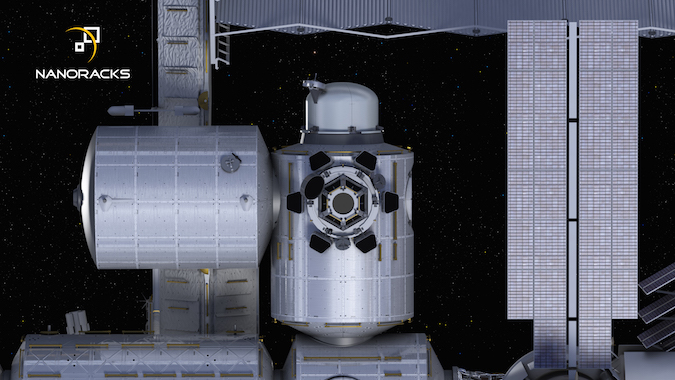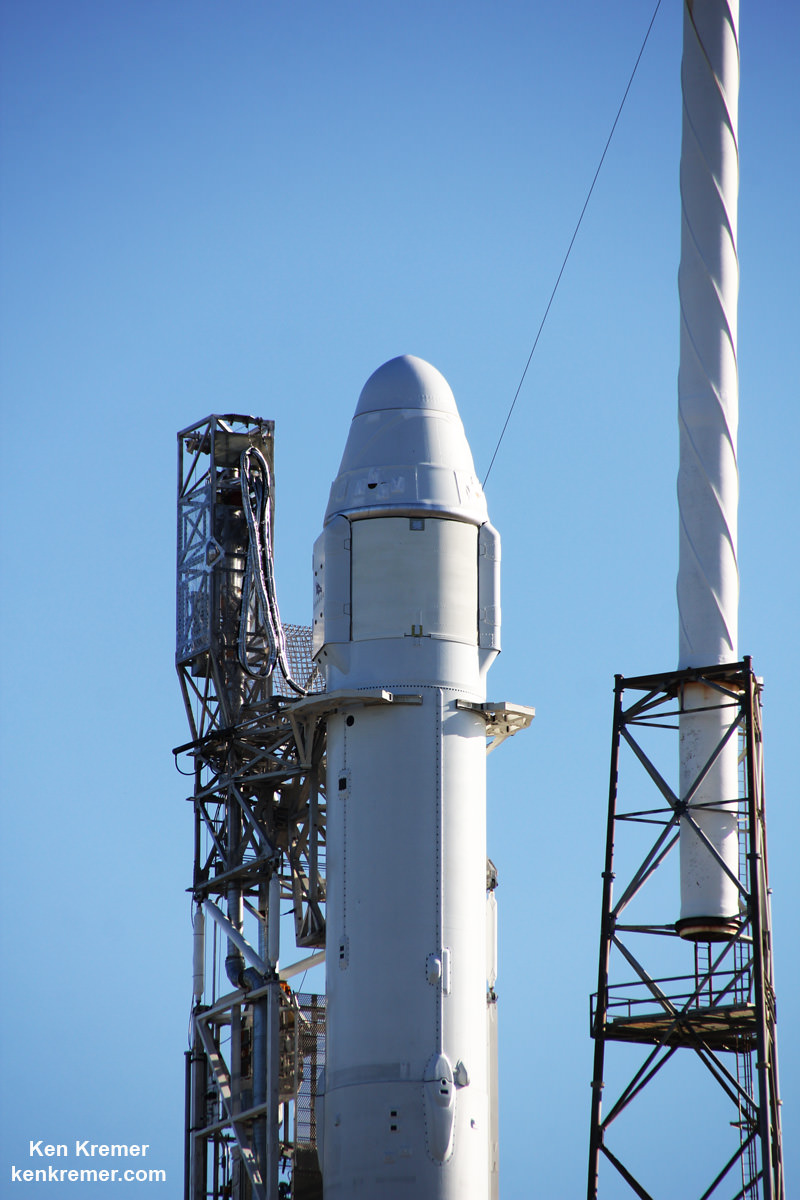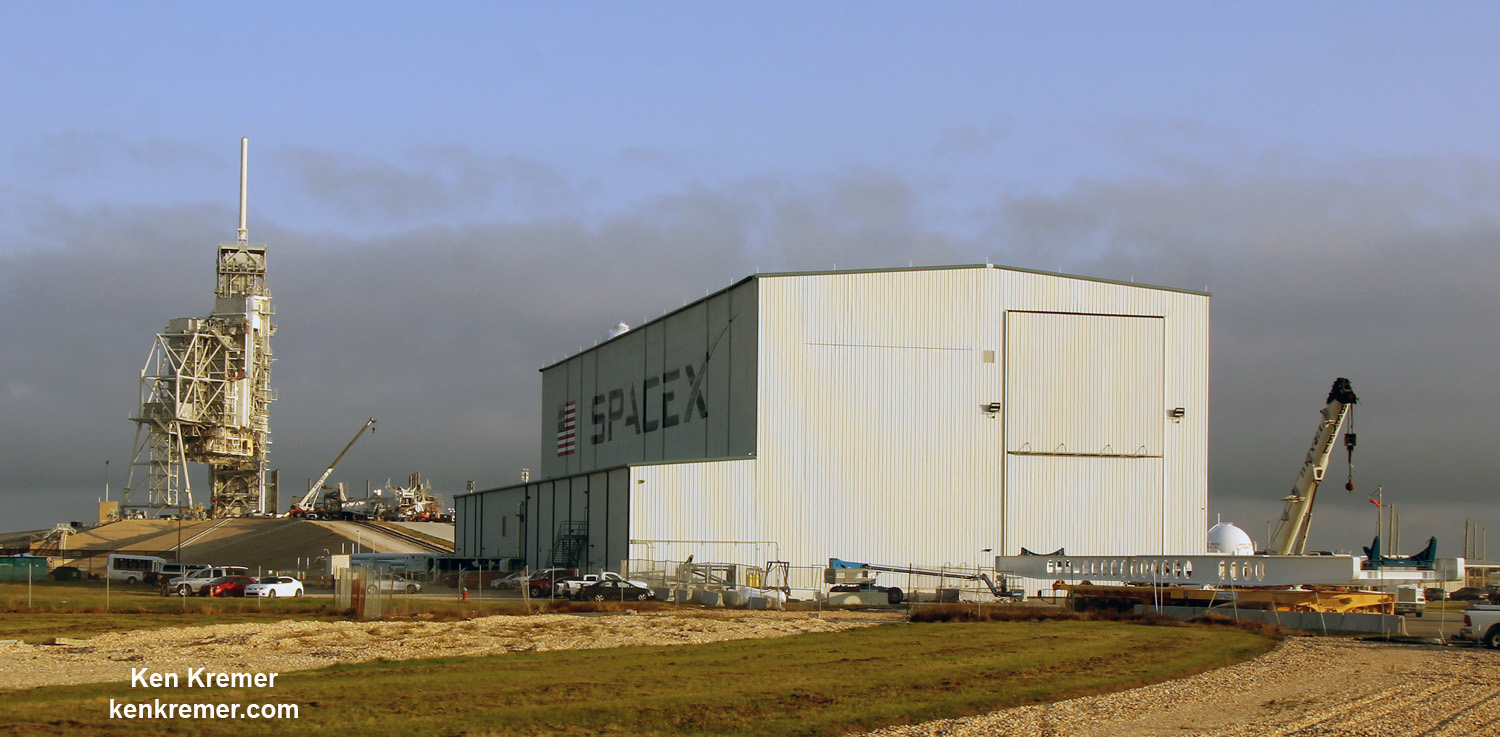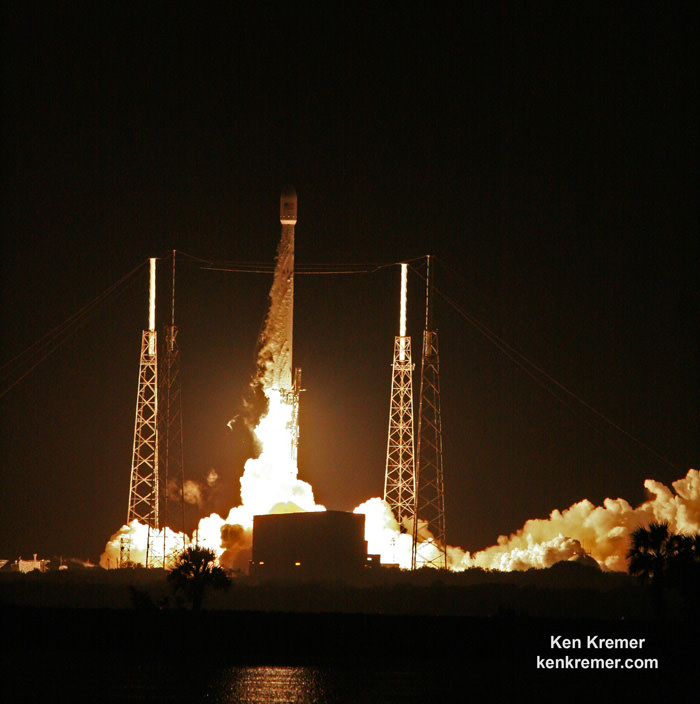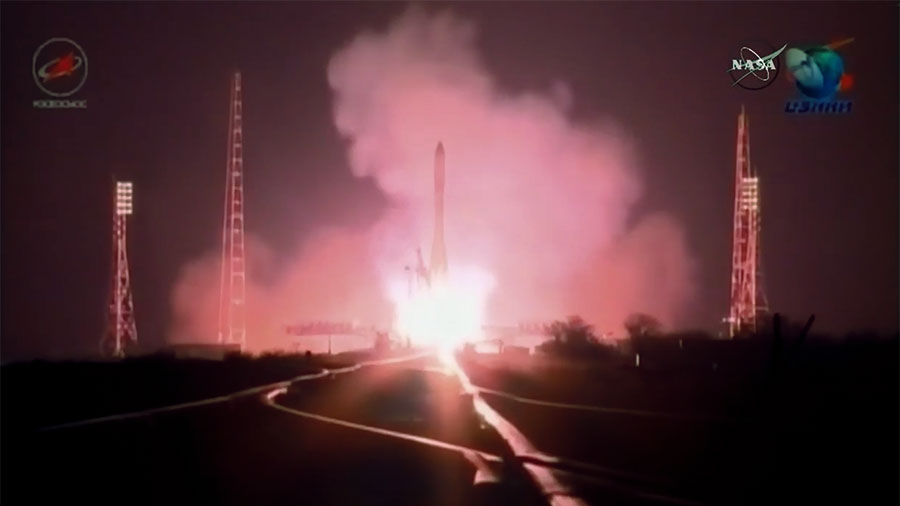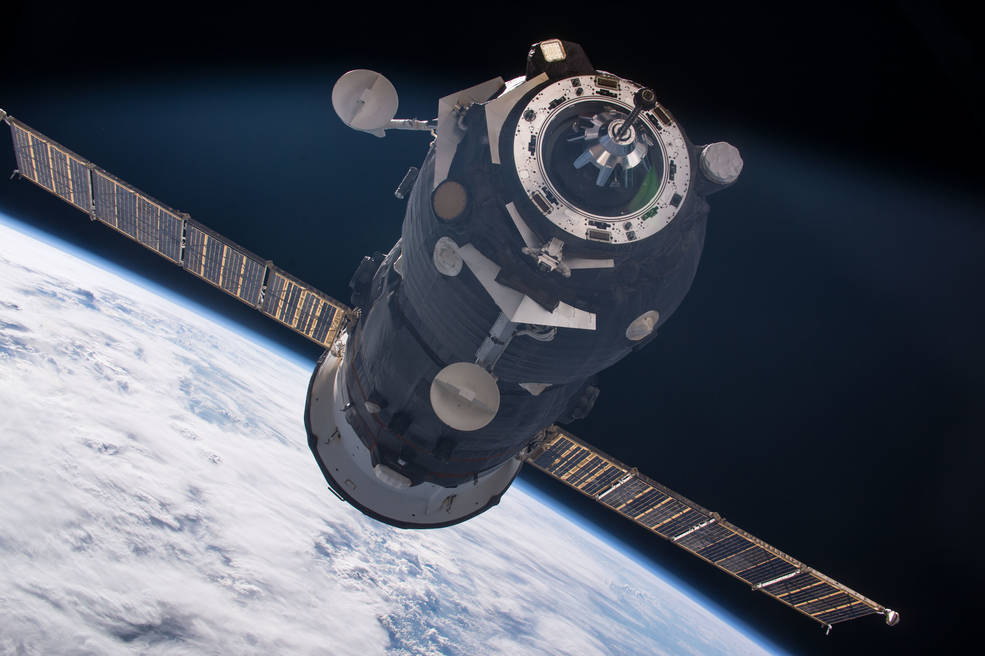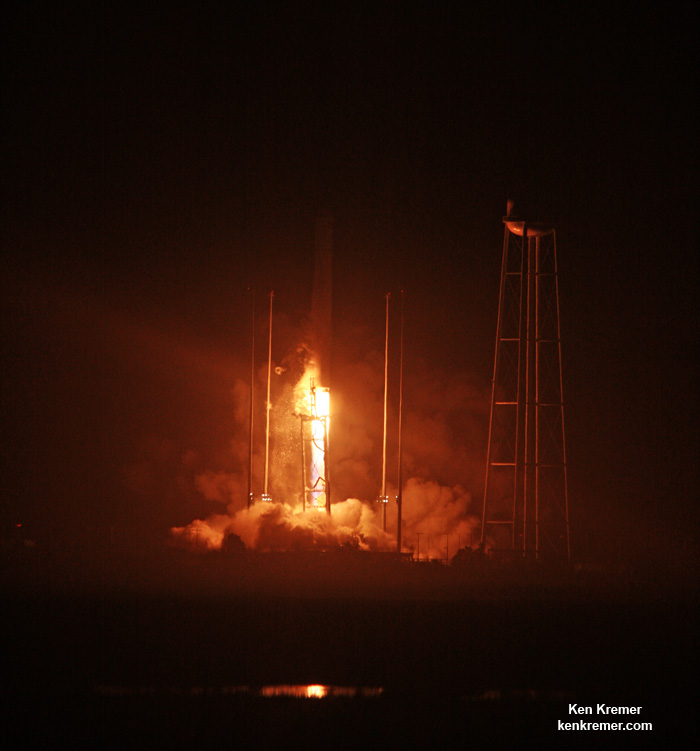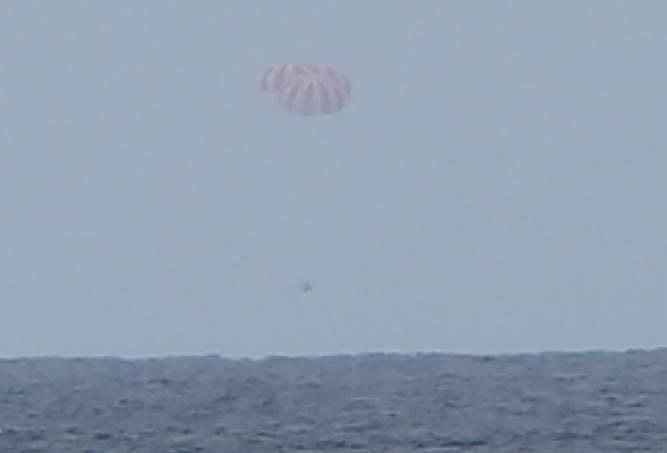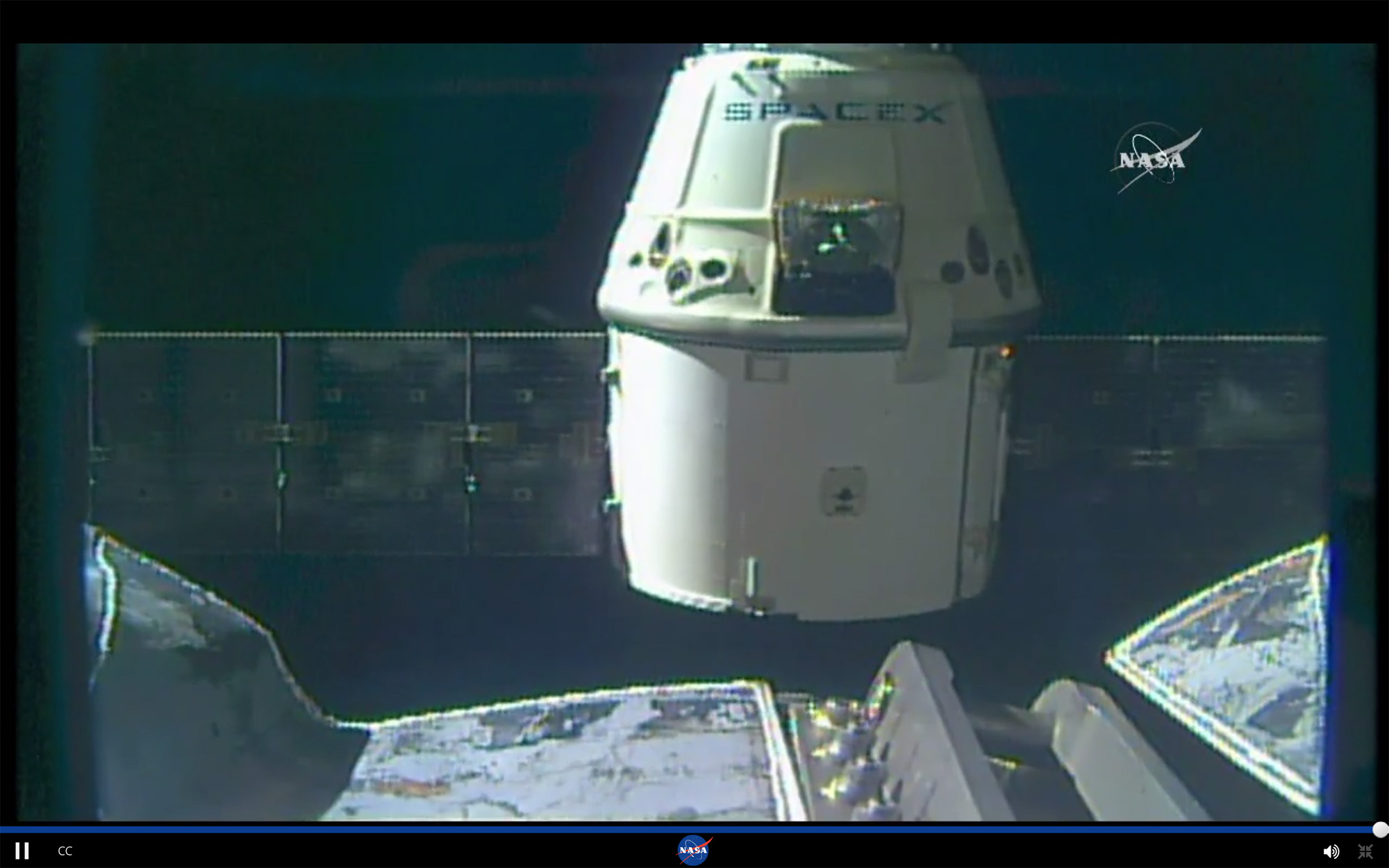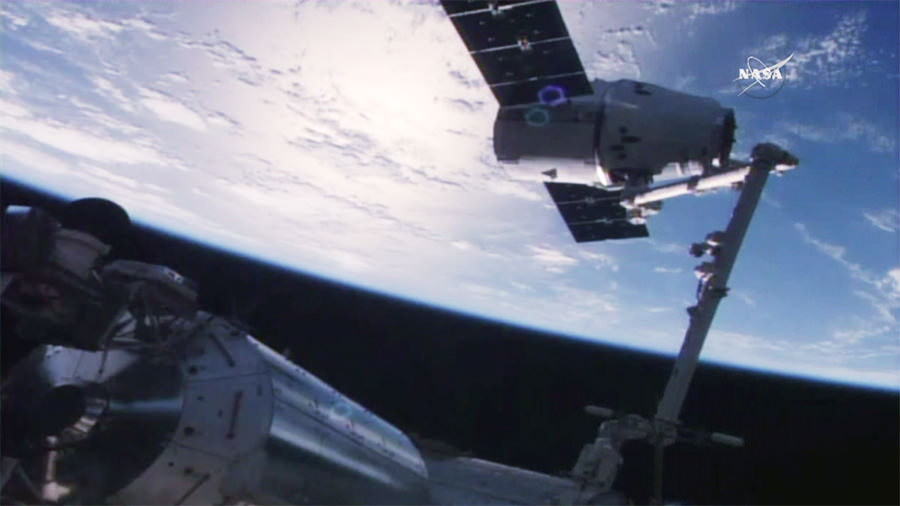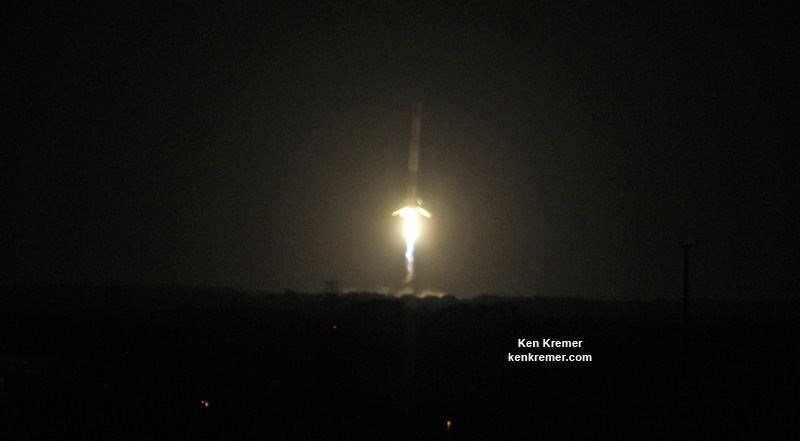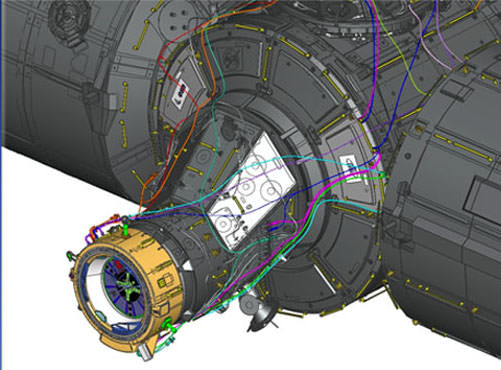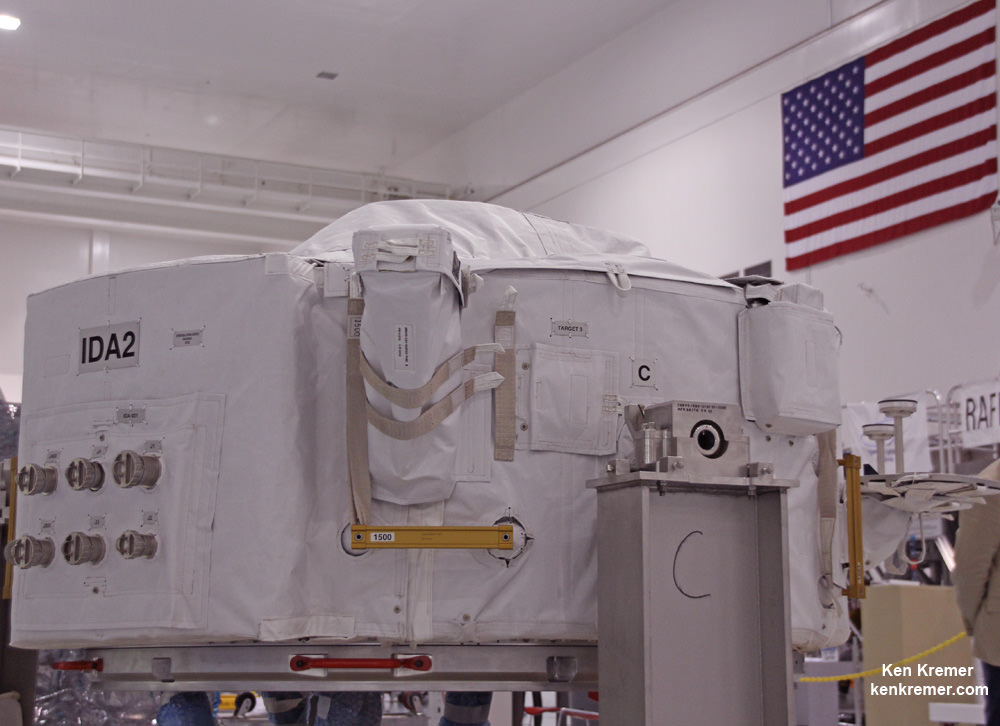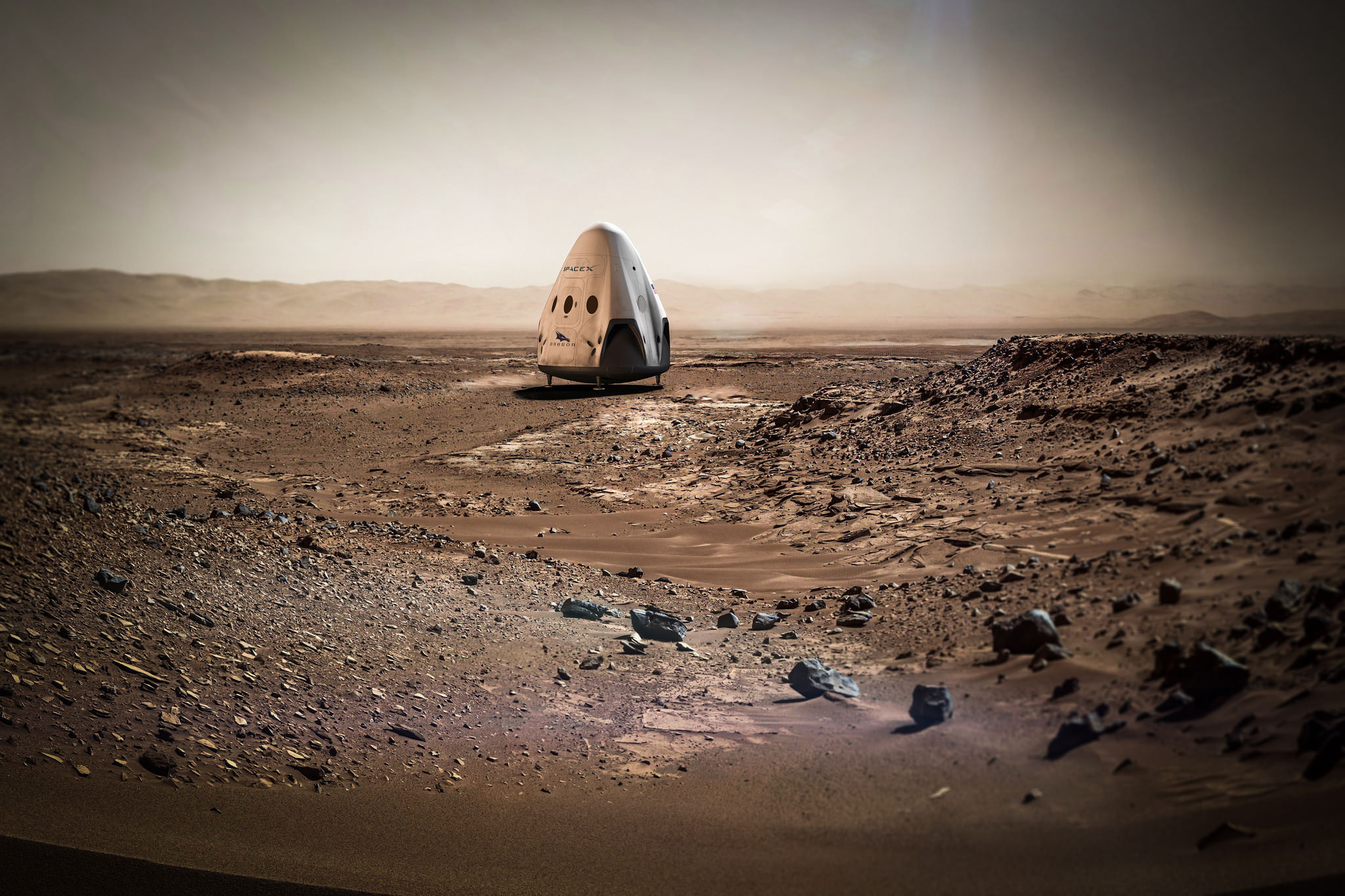
KENNEDY SPACE CENTER, FL – With so many exciting projects competing for the finite time of SpaceX’s super talented engineers, something important had to give. And that something comes in the form of slipping the blastoff of SpaceX’s ambitious Red Dragon initiative to land the first commercial spacecraft on Mars by 2 years – to 2020. Nevertheless it will include a hefty science payload, SpaceX’s President told Universe Today.
The Red Dragon launch postponement from 2018 to 2020 was announced by SpaceX president Gwynne Shotwell during a Falcon 9 prelaunch press conference at historic pad 39A at NASA’s Kennedy Space Center in Florida.
“We were focused on 2018, but we felt like we needed to put more resources and focus more heavily on our crew program and our Falcon Heavy program, said SpaceX Gwynne Shotwell at the pad 39a briefing.
“So we’re looking more in the 2020 time frame for that.”
And whenever Red Dragon does liftoff, it will carry a significant “science payload” to the Martian surface, Shotwell told me at the pad 39A briefing.
“As much [science] payload on Dragon as we can,” Shotwell said. Science instruments would be provided by “European and commercial guys … plus our own stuff!”
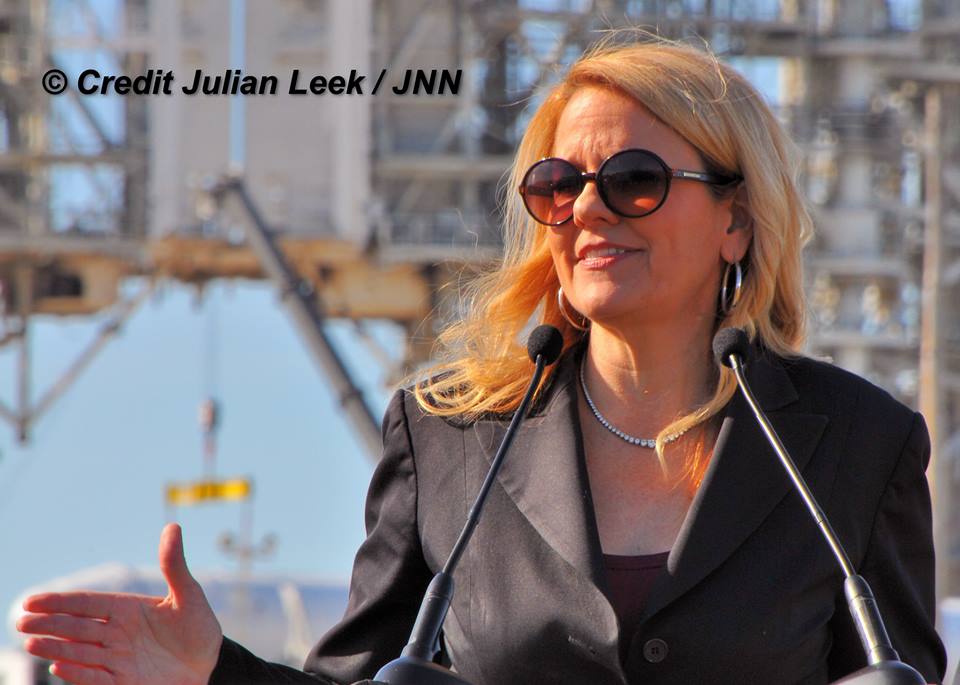
Another factor potentially at play is yesterdays (Feb 27) announcement by SpaceX CEO Elon Musk that he has two hefty, revenue generating paying customers for a manned Moonshot around the Moon that could blastoff on a commercial crew Dragon as soon as next year atop a Falcon Heavy from pad 39A – as I reported here.
Whereas SpaceX is footing the bill for the private Red Dragon venture.
Pad 39A is the same pad from which the Red Dragon mission will eventually blastoff atop a heavy lift SpaceX Falcon Heavy rocket – and which just reopened for launch business last week on Feb. 19 after lying dormant for more than 6 years since the retirement of NASA’s Space Shuttle Program in July 2011.
So at least the high hurdle of reopening pad 39A has been checked off!
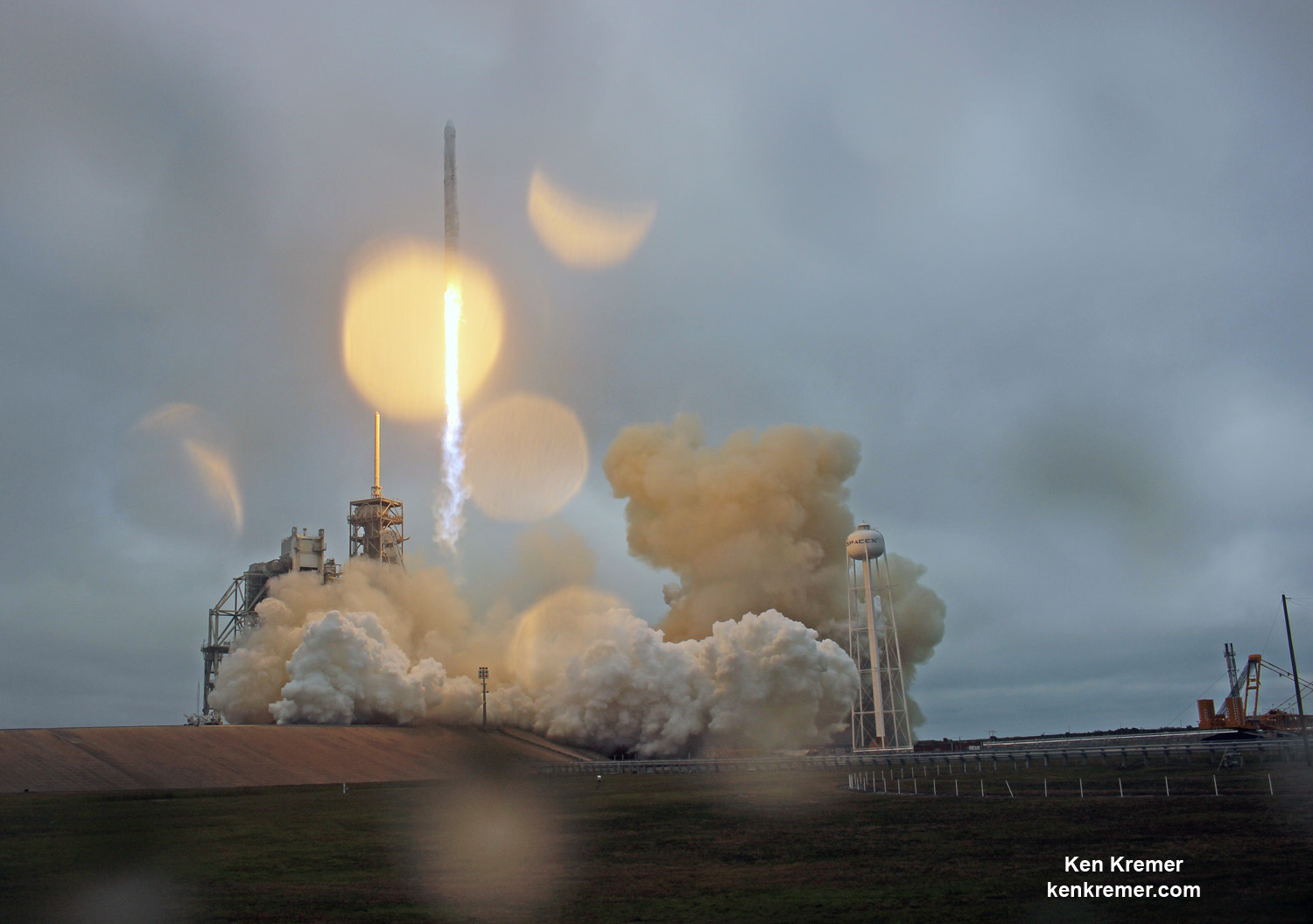
SpaceX continues to dream big – setting its extraterrestrial sights on the Moon and Mars.
Musk founded SpaceX with the dream of transporting Humans to the Red Planet and establishing a ‘City on Mars’.
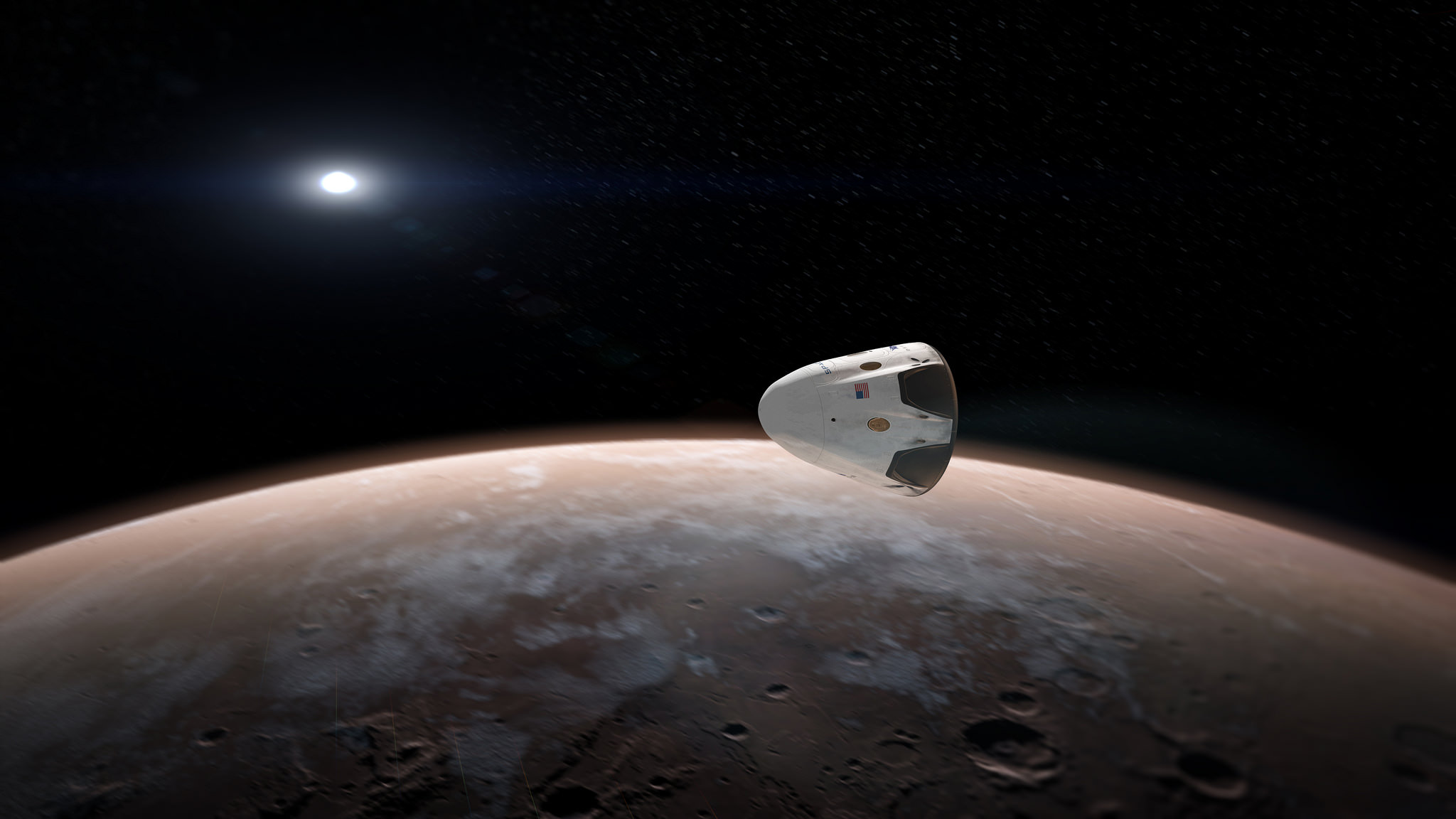
Since launch windows to Mars are only available every two years due to the laws of physics and planetary alignments, the minimum Red Dragon launch delay automatically amounts to 2 years.
Furthermore the oft delayed Falcon Heavy has yet to launch on its maiden mission.
Shotwell said the maiden Falcon Heavy launch from pad 39A is planned to occur this summer, around mid year or so – after Pad 40 is back up and running.
And the commercial crew Dragon 2 spacecraft being built under contract to NASA to launch American astronauts to the International Space Station (ISS) has also seen its maiden launch postponed more than six months over the past calendar year.
Finishing the commercial crew Dragon is absolutely critical to NASA for launching US astronauts to the ISS from US soil – in order to end our total dependence on Russia and the Soyuz capsule at a cost in excess of $80 million per seat.
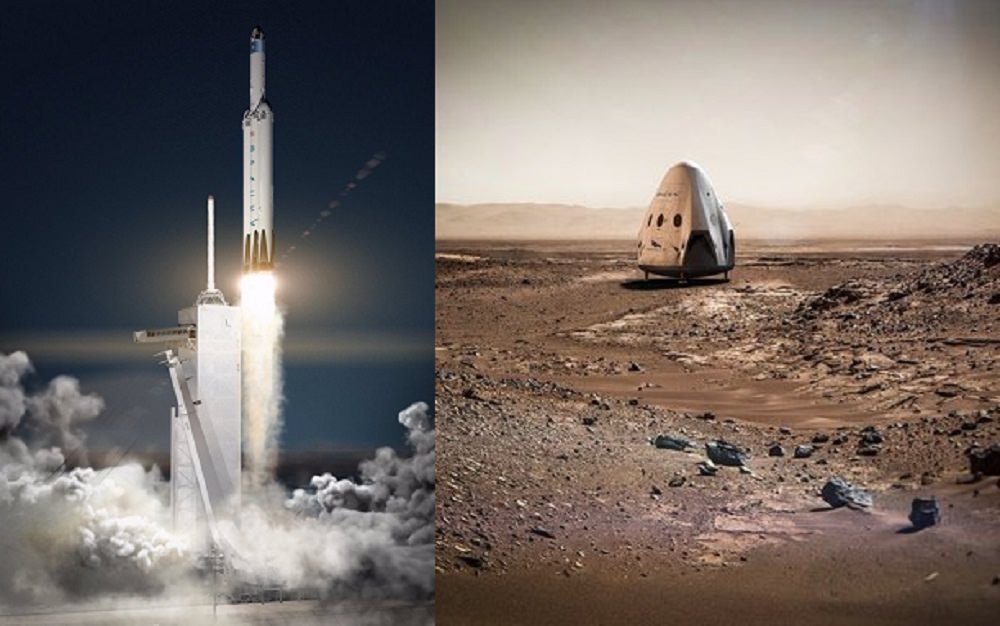
The bold Red Dragon endeavor which involved launching an uncrewed version of the firms Dragon cargo spacecraft to carry out a propulsive soft landing on Mars as soon as 2018, was initially announced with great fanfare by SpaceX less than a year ago in April 2016.
At that time, SpaceX signed a space act agreement with NASA, wherein the agency will provide technical support to SpaceX with respect to Mars landing technologies for ‘Red Dragon’ and NASA would reciprocally benefit from SpaceX technologies for Mars landing.
But given the magnitude of the work required for this extremely ambitious Mars landing mission, the two year postponement was pretty much expected from the beginning by this author.
The main goal is to propulsively land the heaviest payload ever on Mars – something 5-10 times the size of anything landed before.
“These missions will help demonstrate the technologies needed to land large payloads propulsively on Mars,” SpaceX noted last April.
Red Dragon will utilize supersonic retropropulsion to achieve a safe touchdown.
I asked Shotwell whether Red Dragon would include a science payload? Would Universities and Industry compete to submit proposals?
“Yes we had planned to fly [science] stuff in 2018, but people are also more ready to fly in 2020 than 2018,” Shotwell replied.
“Yes we are going to put as much [science] payload on Dragon as we can. By the way, just Dragon landing alone will be the largest mass ever put on the surface of Mars. Just the empty Dragon alone. That will be pretty crazy!”
“There are a bunch of folks that want to fly [science], including European customers, commercial guys.”
“Yeah there will be [science] stuff on Dragon – plus our own stuff!” Shotwell elaborated.
Whenever it does fly, SpaceX will utilize a recycled cargo Dragon from one of the space station resupply missions for NASA, said Jessica Jensen, SpaceX Dragon Mission manager at a KSC media briefing.
NASA’s still operating 1 ton Curiosity rover is the heaviest spaceship to touchdown on the Red Planet to date.
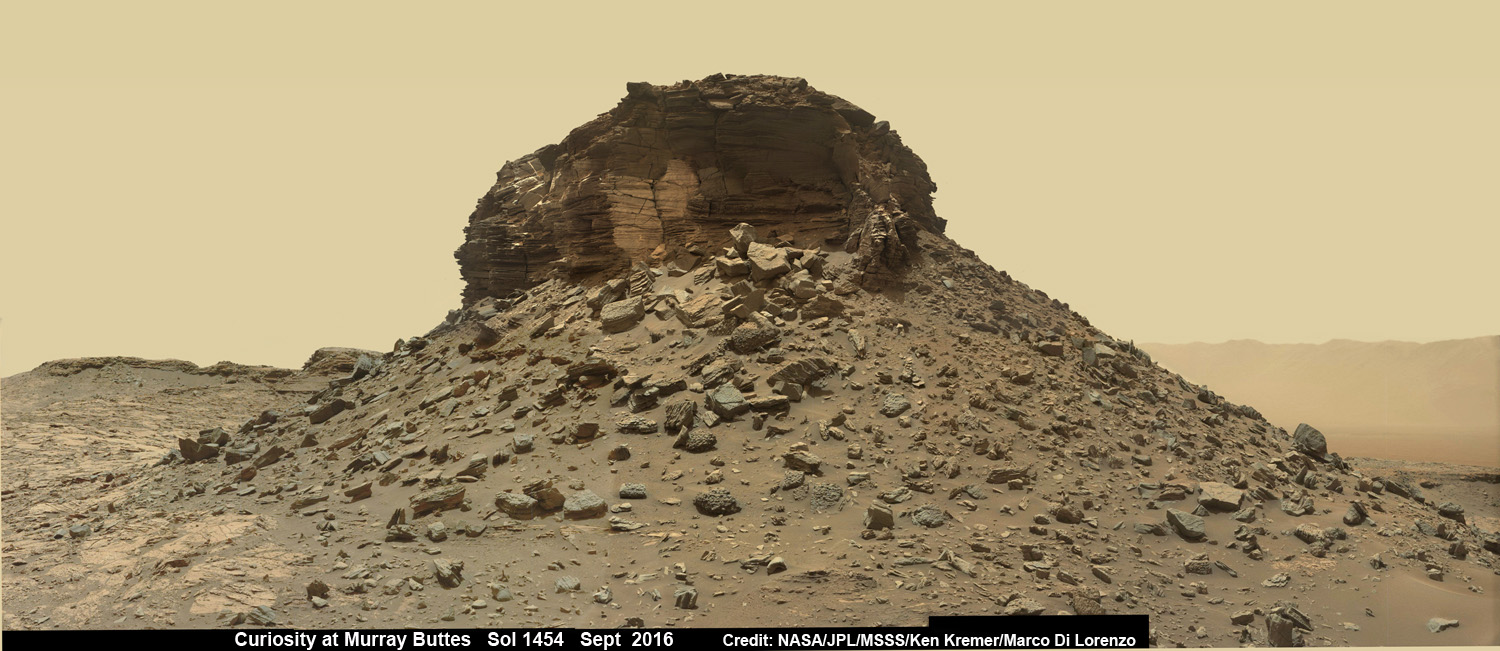
NASA’s agency wide goal is to send humans on a ‘Journey to Mars’ by the 2030s utilizing the SLS rocket and Orion deep space capsule – slated for their uncrewed maiden launch in late 2018.
Although NASA has just initiated a feasibility study to alter the mission and add 2 astronauts with a revised liftoff date of 2019.
Of course it all depends on whether the new Trump Administration bolsters NASA or slashes NASA funding.
Stay tuned here for Ken’s continuing Earth and Planetary science and human spaceflight news.

